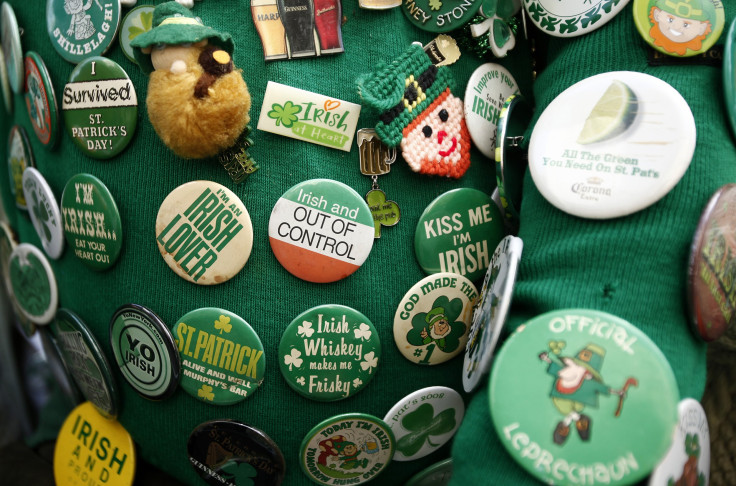St. Patrick's Day 2018: Facts, History And Traditions For The Irish Holiday

Millions of people around the world, whether Irish, Irish-descended or otherwise, will dress up in green and partake in some serious drinking Saturday. However, St. Patrick’s Day is not just about drinking beer, wearing green, shamrocks and participating in parades. The celebrations are deeply rooted in the real man behind the Irish holiday. Many, though, will not quite actually know why they are engaging in the annual ritual of observing St. Patrick’s Day.
Here are a few facts about St. Patrick and the holiday so you can be a little wiser on March 17:
- St. Patrick was actually born in Britain and his birth name was Maewyn Succat. However, he changed it to "Patricius" after becoming Ireland’s patron saint. St. Patrick, whose death is marked every year March 17, is considered to be one of Christianity’s most famous figures.
- He was born in Britain toward the end of the fourth century and was said to have been kidnapped by Irish raiders and taken to Ireland at the age of 16. During his six years in prison, legend has it that he discovered Christianity and heard the voice of God asking him to make his escape.
- Although he soon made his way back to Britain, a second revelation from God informed him to return to Ireland as a missionary.
- So, St. Patrick was not Irish and his parents were Roman citizens.
- The most famous legend surrounding St. Patrick is he is the main reason for Ireland not having any snakes. The story goes that he banished them from the country by chasing them into the sea. However, all sorts of evidence suggest snakes were never there in the country.

- The day on which St. Patrick died became an official feast day in the Catholic Church in 1631. In Ireland, people would commemorate the day by going to church in the morning and then would break the sacrifices of Lent during the afternoon by eating Irish bacon and cabbage.
- St. Patrick’s Day was typically, according to tradition, a dry holiday. As per Irish law between 1903 and 1970, St. Patrick’s Day was made a religious holiday for the entire country, which meant pubs were closed for the day, according to Catholic Online.
- However, in present day, the Irish holiday is arguably one of the largest drinking holidays with an estimated $245 million approximately spent on beer alone on March 17, according to Mental Floss.
- The first ever parade for St. Patrick's Day was held in New York in 1762, when Irish soldiers serving in the English military marched through the city.
© Copyright IBTimes 2024. All rights reserved.
Join the Discussion






















